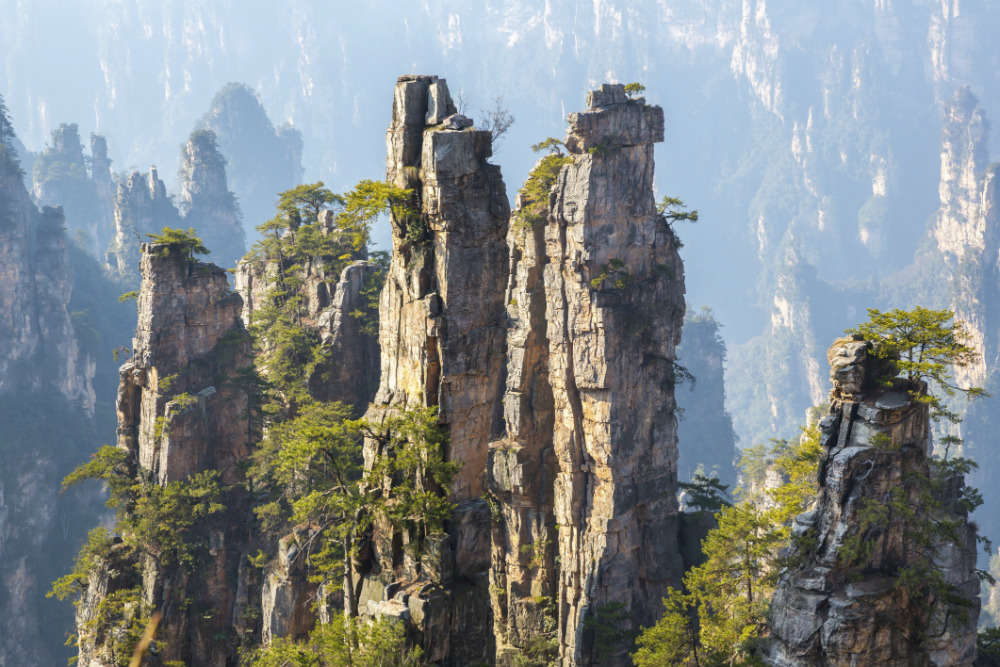
Who Created the Zhangjiajie Glass Bridge?
While the Zhangjiajie Grand Canyon Glass Bridge is a marvel of modern engineering, attributing its creation solely to one person would be a simplification. The bridge, like most large-scale projects, is the result of collaboration between various individuals and teams possessing expertise in diverse fields.
The Visionary Behind the Design
The visionary behind the bridge's unique design was indeed Haim Dotan, an internationally renowned architect and poet.
Haim Dotan: Architect and Poet
- Founder: Haim Dotan Ltd. Architects and Urban Designers
- Design Philosophy: Dotan emphasizes the integration of nature and architecture, striving to create structures that harmonize with their surroundings.
- Notable Projects: Besides the Zhangjiajie Glass Bridge, Dotan has led numerous projects globally, showcasing his unique blend of artistry and engineering.
Dotan envisioned a bridge that would not only connect two cliffs but also appear to disappear into the landscape, offering visitors an unparalleled experience of the natural beauty surrounding them.
Collaboration Beyond the Designer
However, translating this vision into reality required a concerted effort from several other key players:
1. Structural Engineers
- Role: Responsible for ensuring the bridge's structural integrity and stability, especially considering the region's challenging geological conditions and potential seismic activity.
- Key Considerations:
- Load calculations for pedestrian traffic and environmental factors like wind.
- Material selection for strength, durability, and weather resistance.
- Implementation of safety measures like anti-slip surfaces and wind barriers.
2. Construction Teams
- Expertise: Executing the complex construction process with precision and adhering to the highest safety standards.
- Challenges:
- Working at a significant height and in challenging terrain.
- Transporting materials and equipment to the remote location.
- Implementing innovative construction techniques for the glass and steel structure.
3. Local Authorities and Stakeholders
- Contribution: Provided support in navigating regulatory requirements, ensuring environmental protection measures, and facilitating collaboration between different teams.
The Zhangjiajie Glass Bridge: A Collaborative Achievement
The table below summarizes the contributions of different groups involved in creating the Zhangjiajie Glass Bridge:
| Contributor | Role |
|---|---|
| Haim Dotan | Conceptual design, aesthetic vision |
| Structural Engineers | Structural integrity, safety, material selection |
| Construction Teams | Project execution, on-site construction, safety implementation |
| Local Authorities & Stakeholders | Regulatory compliance, environmental protection, logistical support |
Therefore, while Haim Dotan provided the artistic vision and design direction, the Zhangjiajie Grand Canyon Glass Bridge stands as a testament to the collaborative efforts of numerous skilled professionals who worked together to realize this architectural marvel.
Q&A
1. What other notable projects has Haim Dotan designed?
Haim Dotan has an impressive portfolio of projects around the world. Some notable examples include the Guangzhou International Finance Center in China, the Ashdod Marina in Israel, and the Xinji Grand Theatre, also in China.
2. What makes the Zhangjiajie region so special?
The Zhangjiajie region is renowned for its stunning natural beauty, characterized by towering sandstone pillars, lush forests, and deep canyons. This unique landscape served as inspiration for the design of the glass bridge, which seamlessly blends with its surroundings.
3. What safety measures are in place on the Zhangjiajie Glass Bridge?
The bridge is designed with numerous safety features, including a high-strength glass deck capable of withstanding significant weight, wind barriers to minimize sway, and anti-slip surfaces for pedestrian safety. Additionally, the number of visitors allowed on the bridge at any given time is strictly controlled.